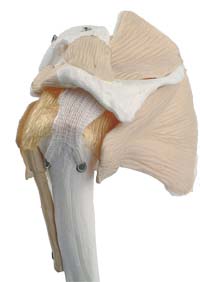May 1, 2010
By Anthony J. Lockwood
Dear Desktop Engineering Reader
 |
The newest round of DE’s Fast Apps fast-read applications stories are now online. Once again, the guys at DE came up with some great engineering tales from the world of product development. Specific engineering specialties this time around come from the fields of aerospace, medical device implantation, computer-aided imaging, and – are you ready – supercars.
In “Altair’s OptiStruct Helps Boeing Optimize Rotorcraft Design,” you get a good look at how engineers at Boeing’s Integrated Defense Systems (IDS) business unit leveraged OptiStruct’s topology-optimization to dramatically cut weight, provide increased functionality, and significantly cut airframe development time. They used OptiStruct to produce a new open-truss structure for the venerable Chinook helicopter’s rear ramp. But, at first, the engineers didn’t buy the results. They thought that the ramp would be less stable than the traditional design and more expensive to produce. But after, after an in-depth analysis, those doubts turned out to be unfounded. Read more ...
The use of hyper-elastic polymeric materials for soft-tissue implants that duplicate or augment the natural response of body tissues is growing. The problem, however, is that a single elastomeric material cannot meet the requirements known as LARS—Ligament Replacement and Augmentation System. Engineers at Continuum Blue Ltd. (UK), a medical device and implant research, development, and analysis company, used COMSOL Multiphysics to assist in the development of a novel method of injecting two slow-curing polymers into a mold to create a one-piece implant with the desired anisotropic hyper-elastic properties. Read “COMSOL’s Multiphysics Enables the Mixing of Polymers for Medical Implants and Streamlines the Manufacturing Process” for more.
Animage LLC, a subsidiary of Exxim Computing Corp., delivers advanced imaging products to the veterinary market. It’s newest system under development combines digital radiography, 3D CT scans, and fluoroscopy in an all-in-one device. Leveraging National instruments’ LabVIEW measurement and automation programming language, engineers were able to prototype their key algorithms, data sources, data sensors, and mechanical hardware digitally before committing to a physical prototype. Later, when software development met hardware development, the prototype was built in a handful of months. See “NI’s LabVIEW and CompactRIO Help Veterinary Equipment Supplier Develop Three-in-One Imaging System” for full details.
Finally, you’ll love the interview with Troels Vollertsen, CTO and co-founder of Danish luxury supercar manufacturer Zenvo Automotive. Luxury? A turbo/supercharged V8 engine, able to accelerate from 0 to 100 kph in 3 seconds, and reach speeds of 375 kph. Only 15 of these babies—priced at a mere 850,000 euros – are to be built. You can read all about it in “PTC’s Pro/Engineer Speeds Development of Denmark’s First Supercar.”
Thanks, Pal.—Lockwood
Anthony J. Lockwood
Editor at Large, Desktop Engineering
Subscribe to our FREE magazine, FREE email newsletters or both!
About the Author
Anthony J. Lockwood is Digital Engineering’s founding editor. He is now retired. Contact him via [email protected].
Follow DE





